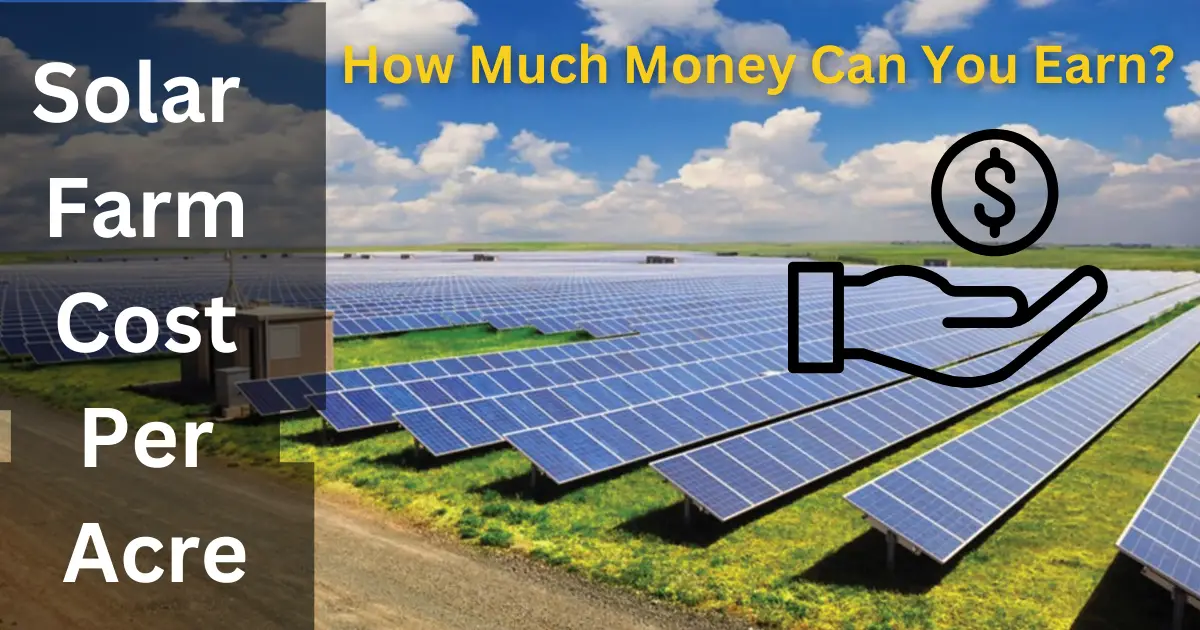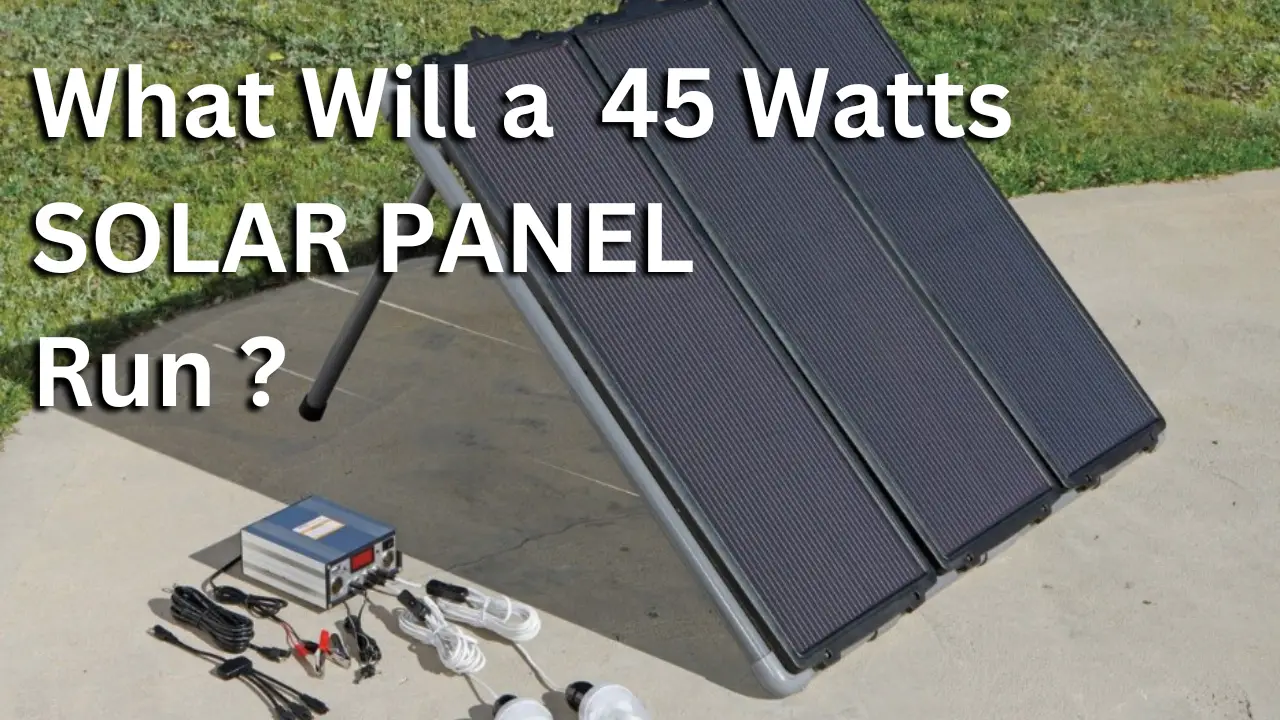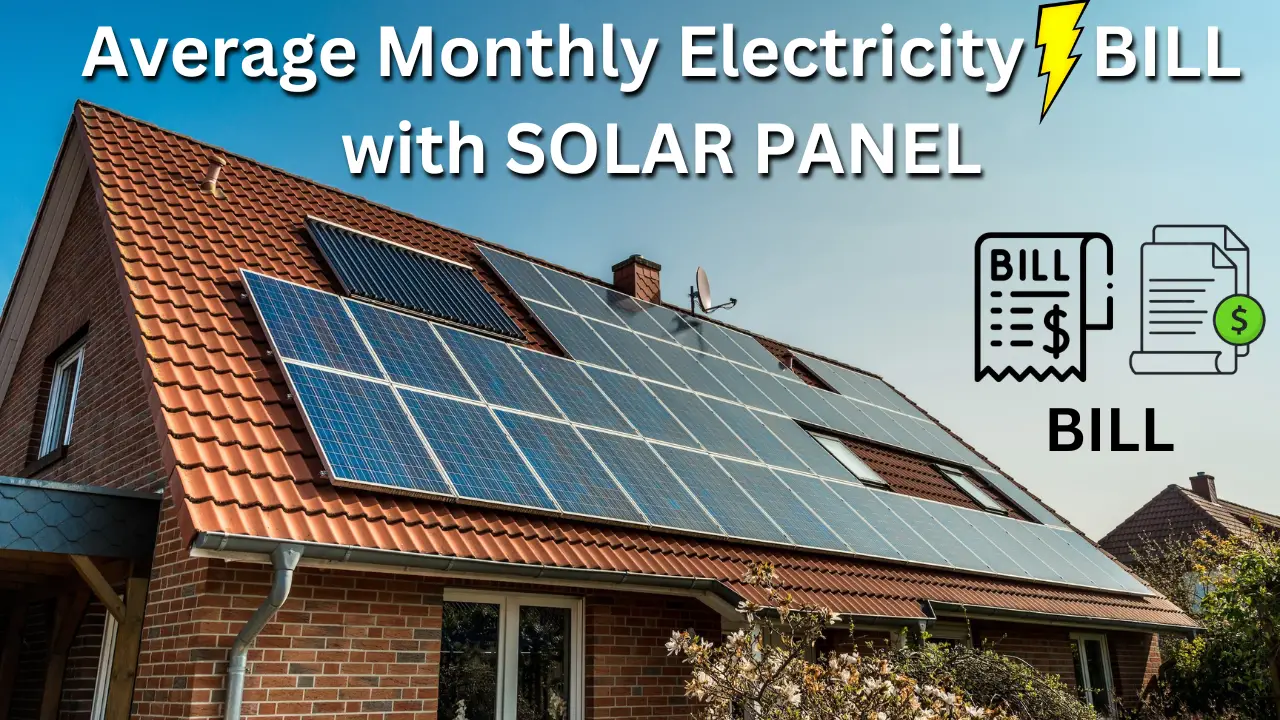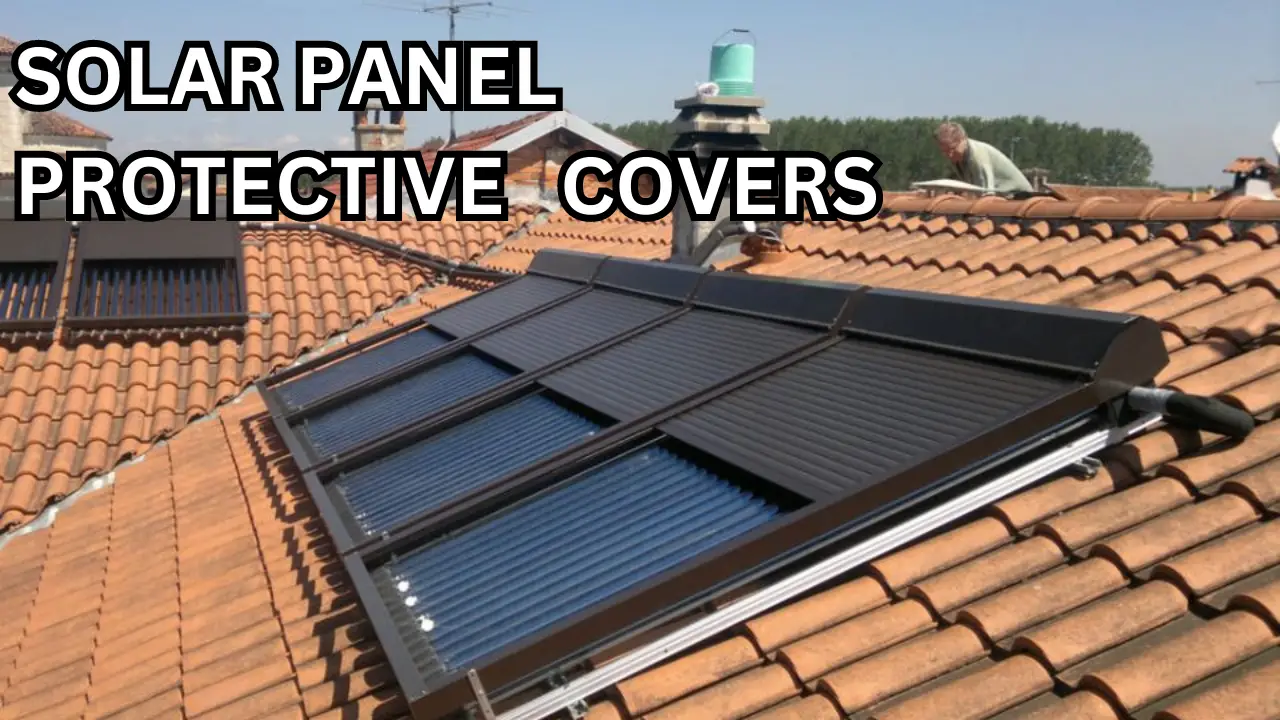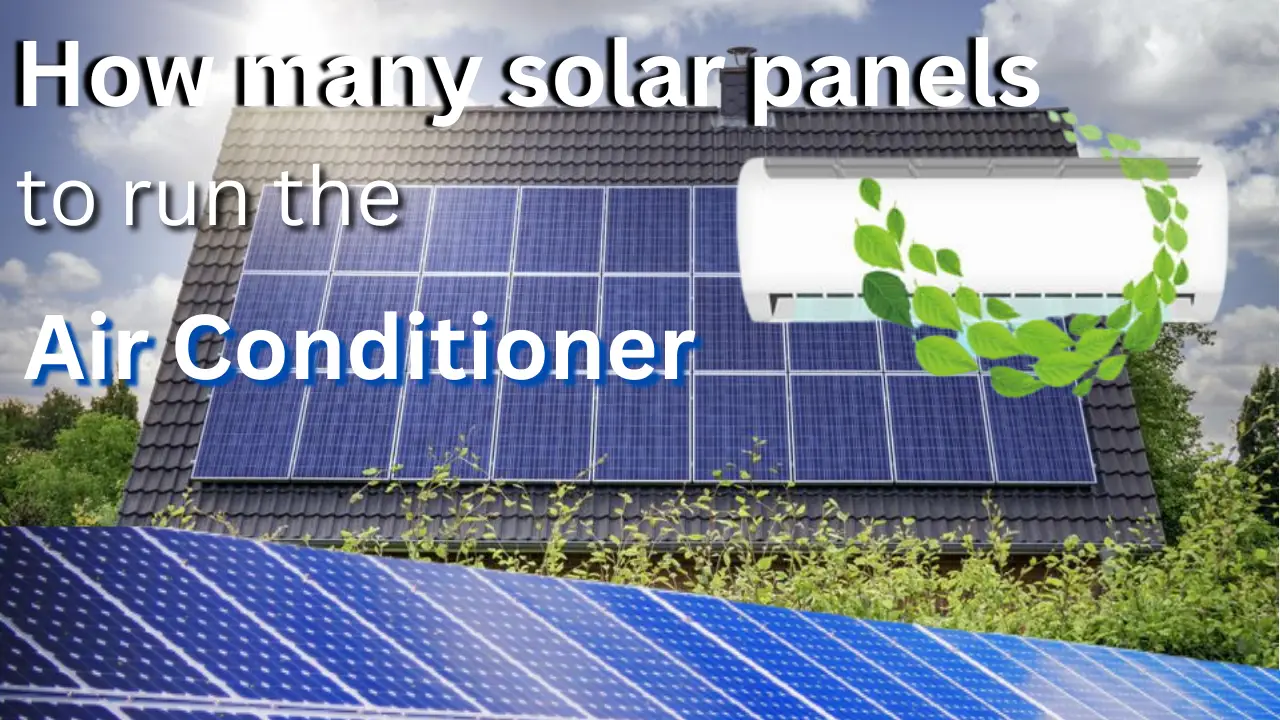Solar Farms are a trending concept for landowners due to their innovative and lucrative method of boosting your financial potential. Those who can afford solar farms must give it a try, and they’ll soon be able to learn how much extensive money they can earn just by running solar farms.
Many homes in the United States can save money by installing solar panels because of abundant sunlight and expensive electricity costs. A solar energy system has a 25-year expected lifespan and may provide steady revenue for up to 50 years. Thus, a solar farm is a viable choice for making money.
On average, one acre of solar panels generates 351 MWh of electricity yearly. Estimate costs of an acre of solar plant land vary widely depending on several factors but are typically in the range of between $400,000 and $500,000 per acre. Solar farm leases can generate annual incomes of $250 to $3,000 per acre.
What Is A Solar Farm?
Simply put, a solar farm is a large-scale installation of solar power technology. The same photovoltaic panels are used in solar farms but on a much grander scale. Farms of this size may generate enough renewable energy to supply a whole town or city.
Solar power stations, parks, and plants are other names for solar farms. They provide the same role as a fossil fuel power plant but without the associated pollution. Solar farming has several advantages, such as:
- Building and operating a solar farm is more affordable than extracting fossil fuels.
- They generate electricity without harming the environment in any way.
- The sun will continue to shine forever, making it a viable fuel source.
Type Of Solar Farming
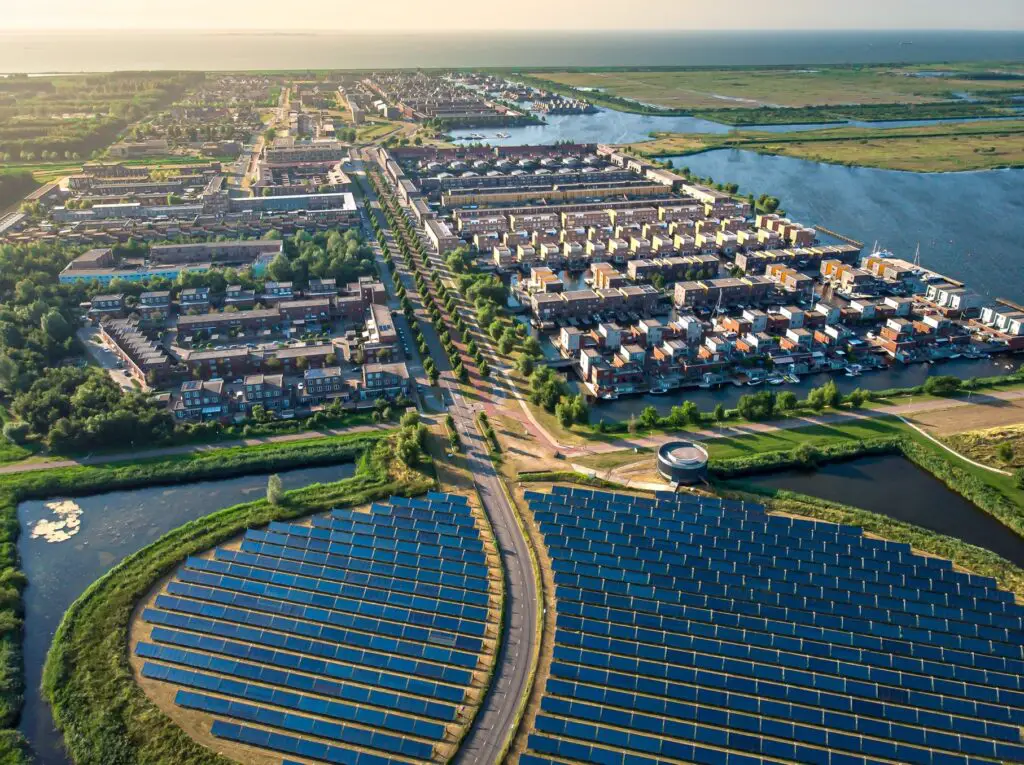
1. Utility-Scale Solar Farms
These are the massive arrays of solar panels, each one of which is substantial on its own but which, when combined, may cover an entire Californian hillside.
Power purchase agreements (PPAs) allow utilities to own large-scale solar farms that generate solar energy and distribute that electricity to several large enterprises, buildings, and organisations across a metropolis.
Pros:
Cost Effective: Utility-scale solar projects make electricity directly. Because of their minimal ecological impact, they can be sited near populated areas. These two variables cancel out the need for expensive transmission tools.
Produce Massive Electricity: Utility solar projects are large scale projects thus produce massive amount of electricity.
Generate More Revenue: As the solar energy industry is expected to expand, this provides even more motivation to invest in large-scale solar power systems for generating more revenue.
Cons:
Large investment is Required: Utility solar projects produce massive amount of electricity and to make this huge electricity, extensive investments and equipments is required.
Expensive: These are most expensive type of solar farming.
Use Alot of Space: This big-scale project requires many acres to build a utility-scale project.
2. Community Solar Farms
Community solar farm projects provide electricity to members or subscribers who have paid for a share of it. Community solar farms are far more modest in scale than utility-scale solar farms, and they generate and distribute solar energy to a much more localized area.
Depending on how many homes are connected to the solar power grid, these solar power installations can take up as little as an acre of land. These solar power systems are typically owned in shares by locals or leased out to businesses and residents in the area they serve rather than being held by a utility.
Pros:
Low Maintenance Cost: These solar projects are low-scale projects, so they require low maintenance costs.
Little Investment: Community solar projects are usually built on 1-acre land and don’t require many investments.
Accessibility: Everyone, not just homeowners, can take part in a solar community project, thus promoting sustainable energy methods.
Cons:
Produce Less Electricity: Community solar projects produce less electricity.
Expensive Solar Energy Storage: These types of solar farms usually have expensive solar energy storage options compared to the cost of solar panels.
How Much Money Does 1 Acre Solar Panels Produce?
To solve this, we need to find out the following:
- Approximately how many solar panels can be placed on one acre?
- Peak solar radiation for a particular location.
How Many Solar Panels Install In One Acre?
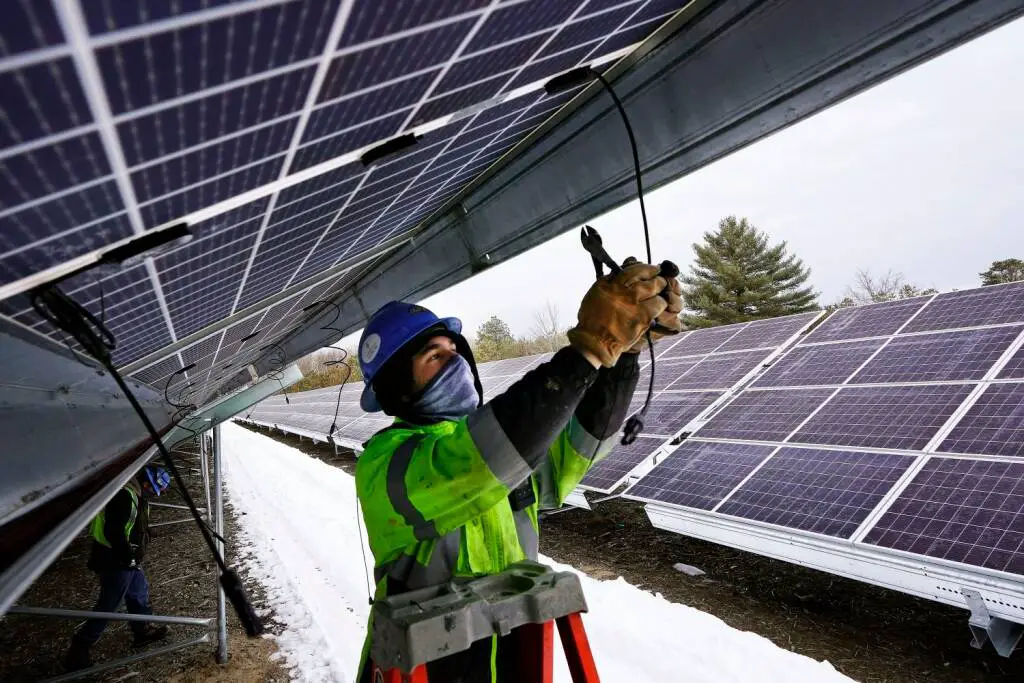
For those wondering, 43,560 square feet is equal to 1 acre. We can calculate how many PV modules may be installed in the 1-acre farm by dividing the whole area by the size of a single solar panel. So, 1573 photovoltaic modules (PV) may be set up on a single acre of land. (show the calculation process so I could make a calculator to be used by the user)
Please follow this link:
https://www.waaree.com/blog/what-is-the-income-for-a-one-acre-solar-farm
About 740 kilowatts (kW) of solar panel surface may be installed on one acre, assuming the panels are arranged in rows with sufficient walk gaps for servicing. To put it simply, 100 square feet can accommodate 1 kilowatt (kW) of solar panels. (Provide a link if available, I want to use in the calculator) An acre is equal to 43560 square feet. Therefore potential solar energy may be located by:
Please follow this link:
https://letsavelectricity.com/how-many-solar-panels-i-can-install-in-100-sq-ft-area/
43560/100x1kw= 435.6kW
Peak Solar Radiation For A Particular Location
The sun is at its brightest during the peak solar hour. Midday is when the sun is at its greatest. Thus, solar panels will only get about that much sunlight if they are oriented directly toward the sun.
If you install solar panels on your roof, you can find out how much power they will produce and how much money you will make by looking at the peak sun hours. They also let you evaluate the amount of sunlight in various areas.
So, you can calculate the peak hours of different locations and find out how much money you can generate from a 1-acre solar farm.
How Much Solar Farm Income Per Acre Should I Expect Yearly?
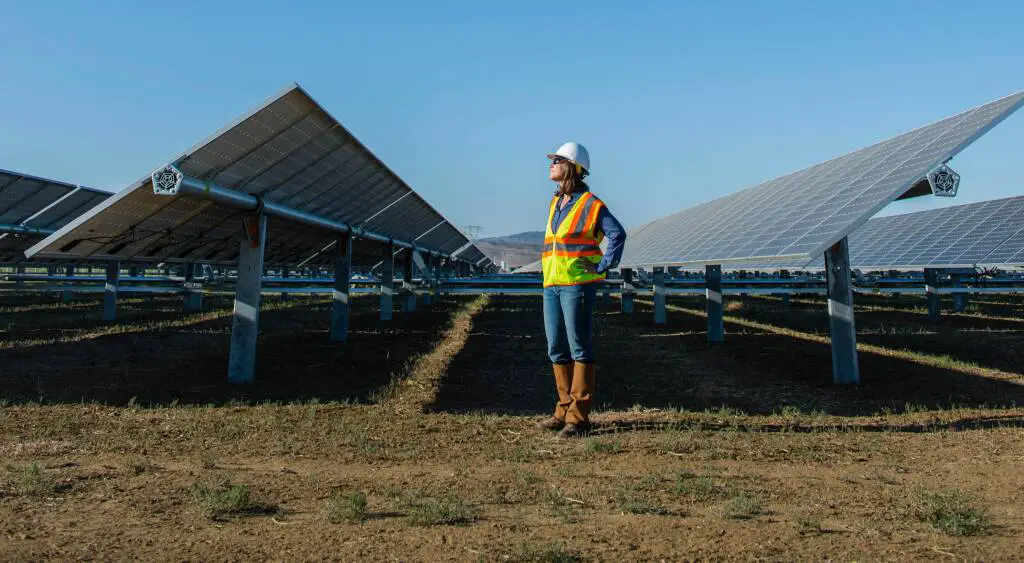
According to estimation, one acre of land in Nevada would generate around 351.3mWh of energy each year. So, how much do you think all of this electricity is worth, monetarily speaking?
This is a massive quantity of energy compared to what can be generated by a household solar system, and it is not sold back to utility companies.
Annual returns of $250 to $3,000 per acre are realistic expectations. The exact numbers will differ from project to project. Building on a large plot of land allows you to take advantage of economies of scale, increasing your potential profit.
The initial investment is significant when dealing with tens of thousands of acres, but the payoff is substantial. However, small farms don’t make much money due to poor power production.
How Much Will 1 Acre Solar Farm Cost You?
According to the Solar Energy Industries Association’s 2021 report, the price per watt to establish a PV system is between $0.77 and $1.36. On the other hand, the cost of a home system ranges from $2.50 to $3.50 per watt, and builders may save a ton of cash by purchasing in bulk for power plants.
It costs roughly $500,000 to set up one acre of land, given that professionals often pay $3 million per Megawatt when establishing a farm.
Cost Breakdown
The cost of producing one watt of electricity, plus any applicable sales tax, can be used to estimate the total cost of a solar farm. The cost breakdown of 1- an acre solar farm is listed below.
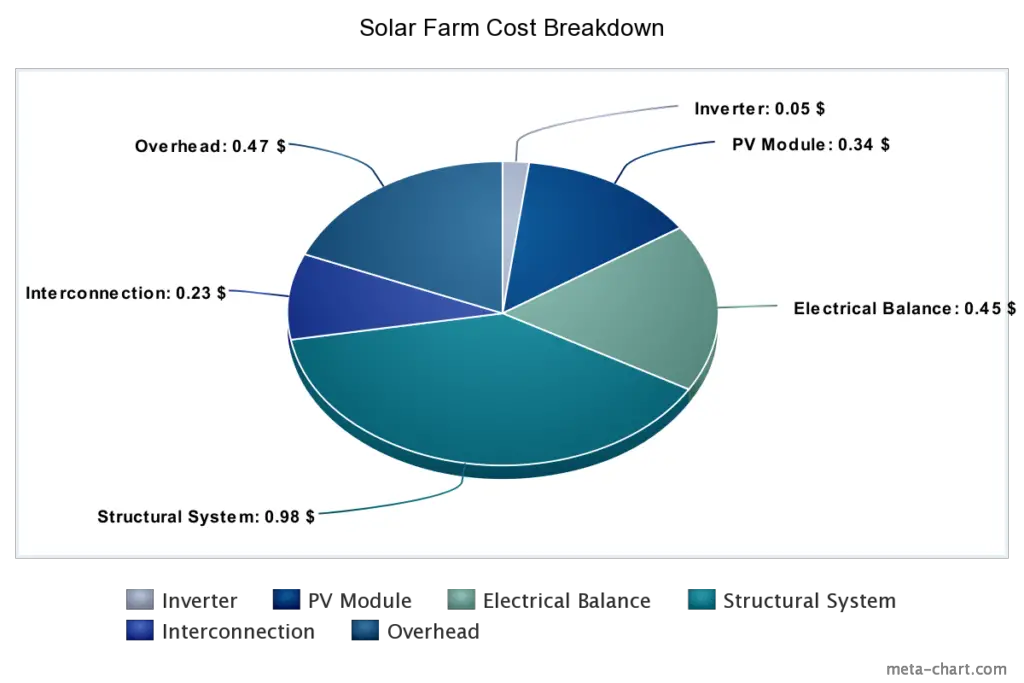
Factors Affecting Solar Farm Cost
The factors that can affect solar farm costs are listed below:
Land Size
The more area you have, the higher the development expenses and the greater the power output; one rule of thumb is that you will need 1 kW from the panels for every 100 square feet.
Soil Quality
It’s strange, but a solar farm has to be physically located on land. Soil that is difficult to develop or unstable (such as a muddy or swampy location) may increase cleanup expenses.
Intensity Of Sunlight
Making sure your property gets plenty of solid sunshine is crucial before you take on the process. Otherwise, the intensity might be lowered, lowering power production and negatively impacting the efficiency of your solar farm.
Grid Proximity
You won’t have to spend any more money establishing a grid if you can easily connect to one. If you want to keep costs down, choose a plot of land no more than 2 miles from a substation and no more than 1000 feet from a three-phase power source.
What Are the Land Requirements Of Solar Farms?
To get an idea about the perfect land for making solar farms, developers must compare their findings with the criteria listed below before certifying land suitable for solar farming.
Land Size
To maximize the economies of scale, you should employ a bigger plot of land. Developers recommend that 30-40 acres be used to maximize electricity generation and financial returns.
Landscape Proximity
While the flat ground is ideal for a solar farm, developers typically seek slightly sloping sites because of the increased sunlight they get. Also, you’ll need to clear the land of any trees or bushes that are in the way.
Proximity to Infrastructure
The developer’s priority will be ensuring adequate infrastructure to sustain the entire project, such as the proximity to a utility grid and other necessary services. Location matters; if the location is too far away, the project will be more expensive, and you may even have to cancel it.
How A Beginner Can Start a Solar Farm
It will help if you keep these factors in mind while starting your solar farm from scratch.
1. Understand the Capital and Operating Costs
One of the main obstacles to using solar farms is the high price. So, How much does it cost to set up a solar farm per acre?
According to Solar Market Insight Report 2020, Residential systems cost $2.83/Wdc, commercial systems cost $1.36/Wdc, utility fixed-tilt systems cost $0.82/Wdc, and utility single-axis tracking techniques cost $0.95/Wdc.
It takes about 3.5 acres of land for 40% of solar farms to generate a GWh annually. This equates to a yearly yield of 285.71-megawatt hours per acre.
According to this estimation, The price of solar panels per acre is expected to range from $26,748.40 to $30,989. Other parts, like racking hardware, inverters, batteries, transformers, and wiring, will have additional costs.
Generally, you should expect to pay between $400,000 and $500,000 for a 1-acre solar farm. However, annual maintenance costs typically range from $15.00 to $25.00 per kilowatt-hour.
2. Plan the Farm And Meet the Specific Requirements First
When organizing a solar farm, it’s essential to get into the nitty-gritty. For instance, the cost and efficiency of the various solar cells available to you might vary widely.
It would help if you kept all of these requirements in your mind while planning the solar farm:
- Type of solar panel, whether monocrystalline or polycrystalline.
- At least 2.5 acres of land (to house the panels) and a lot more for the supporting infrastructure.
- Panels should have enough sunshine and no barriers casting shadows on them.
- Verifying the site’s proximity to a grid and highways.
- Soil quality and land morphology are essential for maximum sunshine exposure.
- Last but not least, don’t forget that you’ll need a permit, which might take months or even years.
3. Purchase the Required Components
If you want to know what more you’ll need for your project, talk to your developer, but for a roughly estimated 1-acre solar farm, you need the following.
- Solar PV modules, ground-mounted solar structures, solar protection, monitoring systems, and connections are all required for this setup to work correctly.
- You will be responsible for purchasing and paying for all necessary materials and equipment for the installation, including solar panels, inverters, protective gear, combiner boxes, and junction boxes.
To get started, you need to research the average solar panels cost in your state and purchase the equipment accordingly.
4. Build the Structure
You may begin constructing the framework once you’ve figured out the structure. Invest in all required materials and set them up on the site.
Use expert installers to ensure they’re mounted in the best possible orientation. The majority of service providers that carry out installations also provide upkeep services.
Find a company that you can work with throughout the lifetime of your panels to cut down on complexity.
5. Release Proposals
Writing proposals to sell the power generated is a must. Make contact with businesses, organizations, and individuals to promote your offerings. Determine your electricity rates, acceptable forms of payment, and the cost of providing your service.
6. Know the Pros and Cons
You should be prepared for the ups and downs of the solar farm industry before jumping in feet first. Solar power has the added benefit of being one of the least expensive ways to generate electricity. Since it is renewable, it is also environmentally safe.
However, developing solar panels and the overall system may be costly, and you’ll need a sizable initial investment to get going. It’s not the best option if you’re in a hurry because it’s a lengthy, complicated process.
How to Increase Solar Farm Income [Effective Strategies]
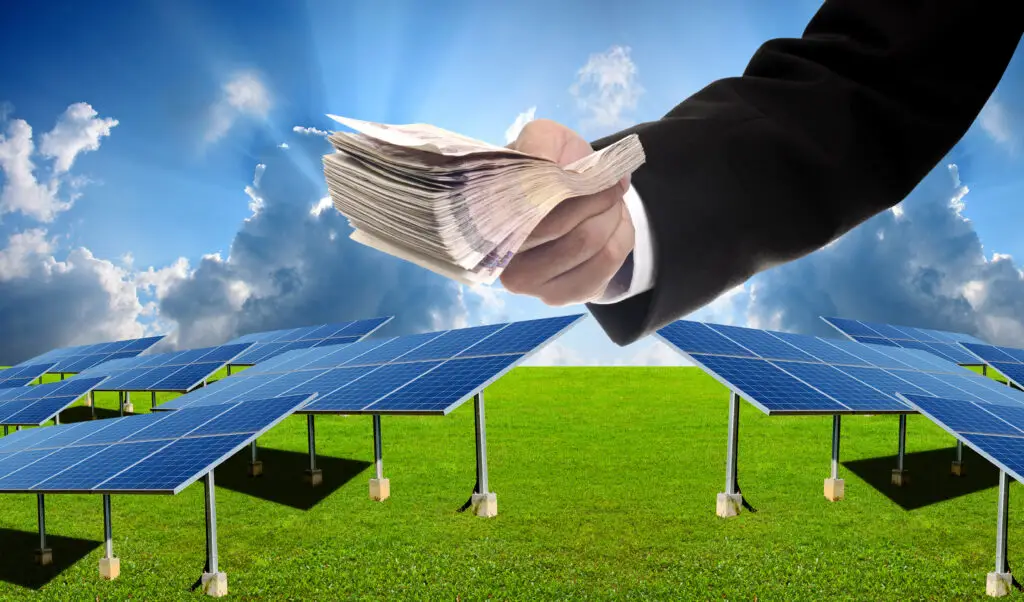
Revenue from solar farms may be maximized per acre by first identifying the components that contribute to that income and making effective strategies to increase solar farm income per acre.
Optimal Location and Size
Before beginning solar farming, you should research applicable regulations in your area. By conducting a survey, find out if locals favor a solar farm.
Focus on areas with abundant sun irradiation and cooperative locals if you want to build the most excellent possible farm there. Locations with plenty of vacant lands and few inhabitants may be more fruitful.
Profitability is maximized in regions where solar power is more expensive than the national average. The need for power is greater in these areas. Although energy demand is unlikely to be zero in the future, it will likely fluctuate in response to shifts in population and living standards.
Your ability to create and sell power depends on the size of your solar array. However, there will probably be restrictions on how big your farm may be, but the more significant your farm will be, the higher power it will generate.
External Financing
If you employ external funding to cover the cost of installation, you’ll be able to start making a profit much sooner. Government tax credits and incentives may offset a portion of the price. Consider looking into no- or low-interest loans to boost solar income.
Optimal Panel Type
Although purchasing inefficient older panels would save money in the short term, they will cost you in the long run. Consult with engineers and materials scientists to determine the most cost-effective panels.
Investing more money upfront in better quality panels can save money in the long run by reducing the frequency with which you will need to replace the system.
Smart Tip: ROI calculations can’t tell you for sure which choice is optimal, but they can help you narrow down your panel type choices.
Proper Maintenance
Maintaining your solar farm should be your first concern if you want to maximize your earnings from solar energy. There is a good chance you will make money from this venture since it is now among the most lucrative.
Maintaining a clean solar farm and conducting routine inspections can significantly reduce the frequency with which repairs are required. It’s important to choose a seasoned manager to oversee the systematic execution of these duties.
Marketing Strategies
No one will pay for the power produced by your massive solar farm if they are unaware of its existence. Advertise your energy supply services to utilities, businesses, and homeowners. How many people you can reach is somewhat proportional to your farm size.
You can use several marketing strategies to increase your solar farm income. These strategies include paid advertising, relationship marketing, internet marketing, etc.
Conclusion
For several reasons, a solar farm is a good idea, whether for ownership or leasing. The first is the increasing and expected future need for non-fossil fuel alternative energy sources. Increasingly, people know that solar energy is a clean, sustainable alternative to mining methods that deplete resources and harm the environment.
The question arises here are solar farms a good investment?
We determined that the average annual profit per acre is $250 to $3,000.
To enter into solar farming, you need to create a business plan to estimate how much it will cost to start up and keep it running.
FAQ
How much money do solar farms make monthly?
Depending on its location, a solar farm may earn between $1200 and $1300 per month per acre. This means that a modest solar farm covering just 2 acres can generate $2500 per month in revenue.
Which would better use the 1-acre field: solar panels or agriculture?
Solar panels are the better option for a 1-acre field because:
- Income from solar farms is rising annually, depending on energy output.
- The land is easier to maintain and requires less labor.
- New energy sources are urgently needed to meet growing demand.
So, Land that isn’t producing income might be leased out to solar power firms to gain revenue.

